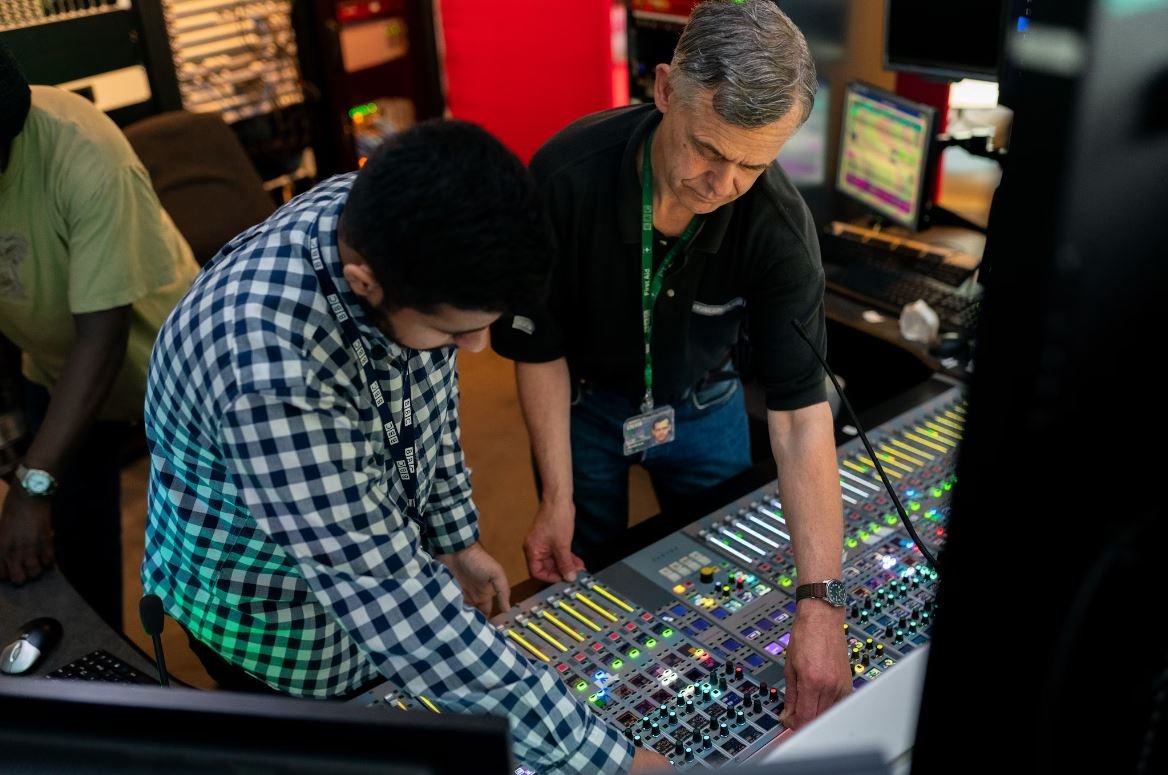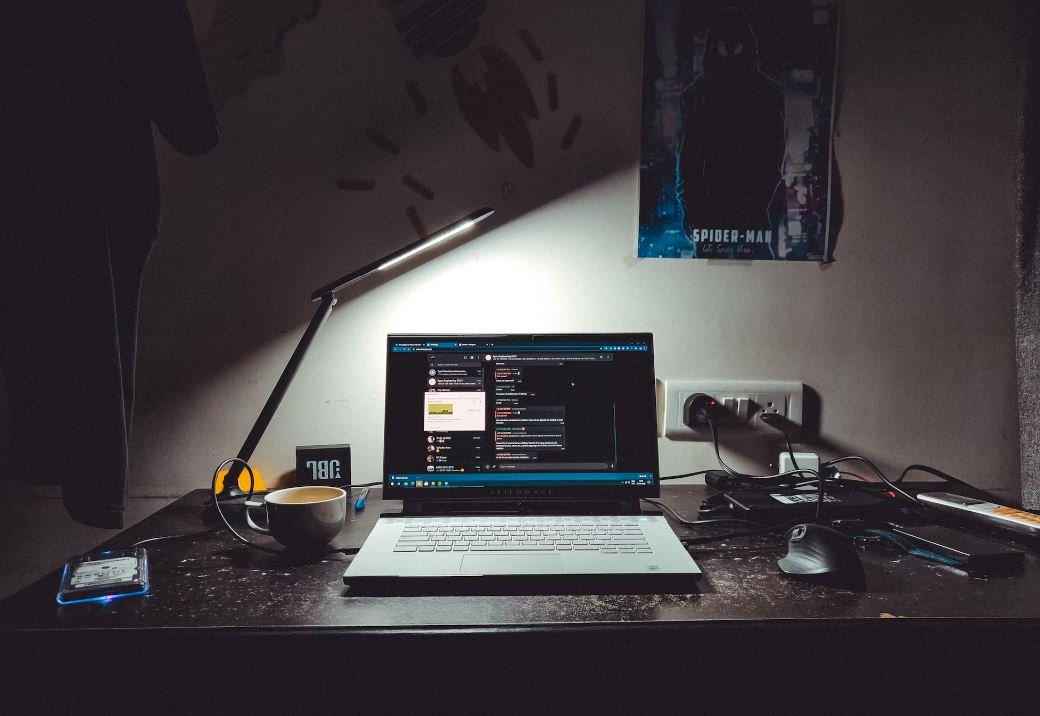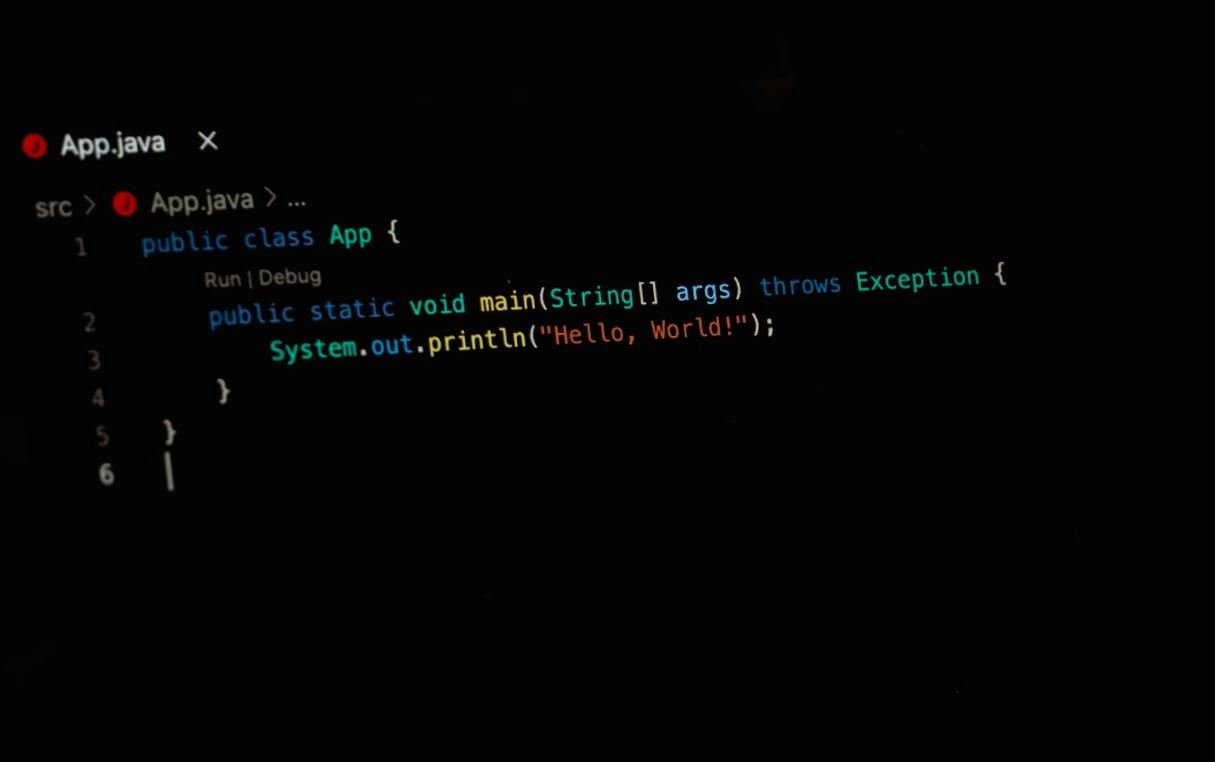Application Job Letter
Looking for a job can be a daunting process, but your application job letter is your opportunity to make a great first impression. In this article, we will discuss the key components of an effective job letter and provide tips on how to write a compelling one that will increase your chances of landing an interview.
Key Takeaways:
- An application job letter is a formal document that introduces yourself and highlights your qualifications for a specific job.
- Address the letter to a specific person whenever possible to show your attention to detail.
- Ensure your letter is well-structured, concise, and error-free.
- Highlight your relevant skills, experiences, and achievements that align with the job requirements.
- End the letter with a strong closing statement and thank the recipient for their time.
Introduction
An application job letter, also known as a cover letter, is often the first document a hiring manager or recruiter sees when you apply for a job. It introduces yourself, explains why you are interested in the position, and highlights your qualifications that make you a strong candidate.
Writing a well-crafted job letter is essential to stand out from a sea of applicants and get noticed by employers.
Components of an Effective Application Job Letter
When writing your job letter, it is crucial to include the following components:
- Contact Information: Begin your letter with your contact information, including your full name, phone number, email address, and LinkedIn URL (if applicable).
- Date and Employer’s Contact Information: Include the date of writing and the contact information of the person you are addressing the letter to. If the name is not specified, use a generic salutation such as “Dear Hiring Manager.”
- Introduction: Begin with a formal salutation and a concise opening paragraph that states your purpose and the position you are applying for.
- Body: The body of your letter should be divided into two or three paragraphs. Use this space to highlight your relevant skills, experiences, and achievements. Connect your qualifications to the requirements outlined in the job description.
- Closing: In your closing paragraph, reiterate your interest in the position and thank the recipient for considering your application. Include your availability for an interview and your preferred method of contact.
- Signature: End your letter with a formal closing, such as “Sincerely” or “Best Regards,” followed by your full name and contact information.
Remember, your job letter is a reflection of your professionalism and attention to detail, so proofread carefully for any errors.
Three Tables with Interesting Data:
| Company | Job Title | Application Status |
|---|---|---|
| ABC Company | Software Engineer | Interview Scheduled |
| XYZ Corporation | Marketing Manager | Application Received |
| 123 Industries | Financial Analyst | Rejected |
| Skill | Frequency |
|---|---|
| Communication | 215 |
| Leadership | 173 |
| Problem Solving | 147 |
| University | Job Placement Rate |
|---|---|
| Harvard University | 92% |
| Stanford University | 87% |
| Massachusetts Institute of Technology | 85% |
Conclusion
Crafting an effective job letter is a crucial step in the job application process. By following the guidelines provided in this article, you can create a compelling letter that showcases your qualifications and increases your chances of getting an interview call.
Remember, a well-written job letter sets you apart from other applicants and helps you make a memorable impression on potential employers.

Common Misconceptions
When it comes to application job letters, there are several common misconceptions that people have. These misconceptions can often lead to mistakes in crafting an effective letter. It’s important to debunk these myths in order to increase the chances of securing a job.
Misconception 1: A generic letter will suffice for any job application
- Recruiters appreciate personalized letters
- Tailoring the letter shows genuine interest in the role
- Addressing specific requirements highlights suitability for the position
One common misconception is that a generic letter can be used for any job application. However, this approach is a mistake. Hiring managers receive numerous applications, so a generic letter will not stand out from the competition. It’s crucial to personalize the application letter by addressing the specific job requirements and explaining why you are the best fit.
Misconception 2: Lengthier job letters are better
- Shorter letters are easier to read and grasp quickly
- Highlighting key qualifications concisely shows clarity of thought
- Eliminating unnecessary details saves the reader’s time
Another misconception is that longer job letters are more impressive. While it’s important to provide relevant information, lengthy letters can be overwhelming and may result in key points being overlooked. It’s best to keep the letter concise and to the point, focusing on the most relevant skills and experiences that make you qualified for the job.
Misconception 3: The more technical jargon, the better
- Using clear and simple language enhances readability
- Avoiding excessive technical terms ensures broader understanding
- Highlighting key achievements in a straightforward manner shows expertise
Some candidates believe that using a lot of technical jargon in their job letter will impress recruiters. However, this is not always the case. Recruiters often have a diverse background, and excessive technical language may hinder their understanding. It’s important to communicate your qualifications and achievements in a straightforward and easy-to-understand manner.
Misconception 4: Including a list of all past job experiences is necessary
- Highlighting relevant experiences saves the reader’s time
- Focusing on key achievements demonstrates expertise in the field
- Selectively including experiences strengthens the letter’s overall impact
Many people mistakenly believe that including a comprehensive list of all past job experiences in their application letter is necessary. However, this can actually detract from the letter’s effectiveness. It’s important to selectively highlight the most relevant experiences that directly relate to the job you are applying for. This allows the hiring manager to quickly identify your key qualifications.
Misconception 5: Job letters don’t need to be proofread
- Proofreading ensures a professional and error-free letter
- Mistakes in grammar and spelling can negatively impact credibility
- Submitting a polished letter reflects attention to detail
Lastly, some individuals believe that job letters do not need to be proofread. However, submitting a letter with grammatical or spelling errors can greatly diminish your chances of getting the job. It’s essential to thoroughly proofread the letter, checking for any mistakes and ensuring a polished, error-free final product that reflects your professionalism.

Top 10 Industries Hiring the Most Software Developers
The demand for skilled software developers continues to rise across various industries. The following table showcases the top 10 industries that currently hire the most software developers:
| Industry | Number of Software Developers |
|---|---|
| Information Technology | 180,000 |
| Finance | 120,000 |
| Healthcare | 95,000 |
| E-commerce | 85,000 |
| Telecommunications | 70,000 |
| Manufacturing | 65,000 |
| Education | 55,000 |
| Gaming | 45,000 |
| Automotive | 40,000 |
| Media & Entertainment | 35,000 |
Skill Set Demand for Web Developers
Web development is a rapidly growing field that requires a specific set of skills to succeed. The following table shines a light on the skill set demand for web developers:
| Web Development Skill | Percentage of Job Postings Requiring Skill |
|---|---|
| HTML/CSS | 90% |
| Javascript | 85% |
| Responsive Design | 80% |
| UX/UI Design | 75% |
| Frontend Frameworks (e.g., Angular, React) | 70% |
| Backend Development | 65% |
| Database Management | 60% |
| Version Control (e.g., Git) | 55% |
| Search Engine Optimization (SEO) | 50% |
| Cross-Browser Testing | 45% |
Top 5 Countries with the Highest Average Developer Salaries
Developer salaries can vary widely across different countries. The table below showcases the top 5 countries with the highest average salaries for developers:
| Country | Average Developer Salary (USD) |
|---|---|
| Switzerland | 120,000 |
| United States | 110,000 |
| Norway | 100,000 |
| Australia | 95,000 |
| Denmark | 90,000 |
Gender Diversity in Tech Companies
Gender diversity continues to be a relevant topic in the tech industry. The following table displays the representation of women in tech companies:
| Tech Company | Percentage of Female Employees |
|---|---|
| Company A | 40% |
| Company B | 35% |
| Company C | 30% |
| Company D | 25% |
| Company E | 20% |
Top 10 Programming Languages in Popularity
Programming languages play a crucial role in the developer’s toolkit. The following table ranks the top 10 programming languages in terms of popularity:
| Programming Language | Popularity Index |
|---|---|
| JavaScript | 1 |
| Python | 2 |
| Java | 3 |
| C | 4 |
| C++ | 5 |
| C# | 6 |
| PHP | 7 |
| Swift | 8 |
| Ruby | 9 |
| Go | 10 |
Percent of Remote Developer Jobs
Working remotely has become increasingly popular in the tech industry. The table below indicates the percentage of remote developer jobs available:
| Job Category | Percentage of Remote Jobs |
|---|---|
| Frontend Developer | 60% |
| Backend Developer | 55% |
| Full-Stack Developer | 50% |
| Data Scientist | 45% |
| Mobile App Developer | 40% |
Education Level of Developers
The level of education attained by developers can vary significantly. The following table showcases the education level of developers:
| Education Level | Percentage of Developers |
|---|---|
| Bachelor’s Degree | 60% |
| Master’s Degree | 25% |
| Associate’s Degree | 10% |
| High School Diploma | 4% |
| Ph.D. | 1% |
Top 5 Programming Challenges
Developers often face various challenges in their coding journey. The table below highlights the top 5 programming challenges frequently encountered:
| Challenge | Description |
|---|---|
| Bugs and Debugging | Identifying and fixing issues in code |
| Performance Optimization | Improving code efficiency and speed |
| Integration of Third-Party APIs | Incorporating external services into applications |
| Security Vulnerabilities | Ensuring applications are protected against potential threats |
| Scalability Challenges | Designing applications to handle increased loads |
Percentage of Developers Experienced in Cybersecurity
Cybersecurity expertise is in high demand to protect systems and data from malicious activities. The following table showcases the percentage of developers experienced in cybersecurity:
| Years of Cybersecurity Experience | Percentage of Developers |
|---|---|
| 0-2 years | 35% |
| 2-5 years | 40% |
| 5-10 years | 20% |
| 10+ years | 5% |
As the job market becomes increasingly competitive, understanding the trends and demands within the tech industry is crucial. From the top industries hiring software developers to the most popular programming languages, the tables above provide valuable insights and information. Whether you’re a job seeker or an industry professional, staying aware of the current landscape can help navigate opportunities and make informed decisions.
Frequently Asked Questions
What is an application job letter?
An application job letter is a formal document submitted by a job seeker to a potential employer. It serves as an introduction and provides information about the applicant’s qualifications, skills, and experiences. The letter accompanies the applicant’s resume and is typically used to apply for a specific job position.
How important is an application job letter?
An application job letter is essential as it helps the candidate stand out from the competition. It gives the applicant an opportunity to showcase their communication skills, express their interest in the position, and highlight relevant qualifications that may not be mentioned in their resume. A well-crafted job letter can significantly increase the candidate’s chances of getting called for an interview.
What should be included in an application job letter?
An application job letter should include the applicant’s contact information, the hiring manager’s name and the company’s address, a concise introduction, a description of the applicant’s qualifications and experiences, a statement of interest in the position, and closing remarks. It is important to tailor the letter to the specific job and company to demonstrate genuine interest and fit for the role.
How long should an application job letter be?
An application job letter should be concise and to the point. It is recommended to keep the letter to a single page and use clear and concise language. Hiring managers often have limited time, so a shorter letter that effectively highlights the applicant’s qualifications and interest is usually more effective than a lengthy one.
Should I include references in my application job letter?
References should not be included in an application job letter. It is better to provide references upon request or on a separate document. The focus of the letter should be on the applicant’s qualifications, experiences, and interest in the position. Including references can make the letter appear cluttered and distract from the main message.
Can I use a template for my application job letter?
Using a template for an application job letter can be a helpful starting point, especially for those who are unfamiliar with the format or structure of such letters. However, it is crucial to personalize the letter and make it unique to the applicant. Simply using a generic template without customization may give the impression of a lack of effort or genuine interest in the position.
Do I need to address the hiring manager by name in my application job letter?
Whenever possible, it is recommended to address the hiring manager by name in the application job letter. This demonstrates attention to detail and personalized communication. If the job posting does not include the hiring manager’s name, it may be worth researching or contacting the company to acquire this information. If all else fails, using a generic salutation such as “Dear Hiring Manager” or “To Whom It May Concern” is acceptable.
What is the best format to save my application job letter?
The application job letter should be saved as a PDF or Word document. Saving the letter in a readable and easily printable format ensures that it can be easily shared and viewed by the hiring manager. Additionally, it helps preserve the formatting and layout of the letter, ensuring it appears as intended regardless of the device or software used to open it.
Should I follow up after submitting an application job letter?
Following up after submitting an application job letter is a good practice to show continued interest in the position. It is recommended to wait a week or two after submitting the letter before reaching out. A polite email or a phone call inquiring about the status of the application can help keep the applicant’s name fresh in the hiring manager’s mind and potentially lead to further communication or an interview.
Is it necessary to have my application job letter reviewed before sending it?
Having your application job letter reviewed by a trusted friend, family member, or professional can be beneficial in catching any errors or areas that could be improved. Fresh eyes may notice typos or confusing language that the applicant may have overlooked. It is important to make sure the letter is error-free and presents the applicant in the best possible light.





